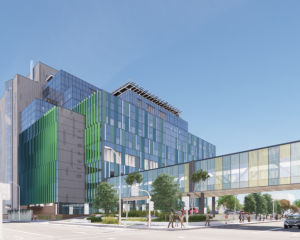
High patient numbers and low staff numbers resulted in the department’s health and safety representative lodging a provisional improvement notice, which requires the Southern District Health Board to take action to fix the issues identified.
The deadline to identify those actions has now passed and WorkSafe New Zealand is considering the SDHB’s response.
At a board hospital advisory committee meeting yesterday, board member Dr John Chambers, an emergency department clinician at Dunedin Hospital, asked what improvements had been made.
The ward had been under tremendous pressure in July, he said.
"Many of these were very sick patients who required admission to hospital, and [for] the nurses who put the provisional improvement notice it was a cry for help and seeking for an avenue to get change.
"It is mainly nursing-led, it is not yet resolved, and I know one of our junior doctors has been also been brave enough to raise concerns about the staffing situation on night shift."
Specialist services executive director Patrick Ng said the board had confirmed additional resourcing for triage and was recruiting.
It was also seeking additional healthcare assistants for night shifts, and confirmed more overnight charge nursing cover.
"Those are additional, unbudgeted, unplanned-for roles which have been agreed to because of the provisional improvement notice."
The SDHB had also agreed to a benchmarking exercise to compare staffing levels at both Dunedin and Southland Hospital emergency departments with those at other DHBs.
Figures presented to the committee yesterday showed high demand at both departments in July, usually a busy time due to winter ailments.
Average daily presentations in Dunedin were 132, compared to a year-to-date average of 126, and at Southland it was 110, just up from the average of 108.
"A number of days of extreme pressure have been reported and we have seen these translate into access pressure for inpatient beds, and the hospitals changing status from green to yellow to orange (with a couple of brief periods of red)," Mr Ng said.
"The resulting pressure has been particularly felt by the operations team who have then instituted actions to increase discharging and enable the flow into inpatient beds to resume."
The colour-coded alert system was introduced to identify when the emergency department was close to being overwhelmed: red is the second-highest alert level, followed by black.
"In Dunedin, as well as the high volumes we have also had reports of roster gaps which have been unable to be filled either due to increased rates of illness or vacancies," Mr Ng said.
Southland Hospital had had its own unique challenge, having to deal with the brief admission of Covid-19 positive crew members from the container ship Mattina, which Mr Ng said had caused significant disruption for the hospital.
Dr Chambers said the Alert Level 4 lockdown had offered some respite for the department, but it had to be expected volumes would rise again.
He was concerned that the longer-term measures the board had approved to address the issues were not due to begin until October 2022.
"It is quite a long time before there is any significant respite in sight there."












